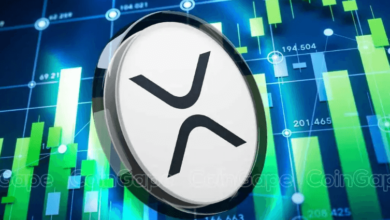
How to Improve Your B2B Sales Funnel for Higher Conversion
In the intricate world of B2B sales, where deals involve multiple stakeholders and extended decision-making processes, a well-optimized sales funnel is the linchpin of success. The B2B sales funnel guides business buyers from initial awareness to final commitment, navigating their need for trust, value, and strategic alignment. Improving this funnel to boost conversions requires a blend of precision, data-driven insight, and buyer-centric strategies. This article explores actionable ways to enhance each stage of the funnel, empowering businesses to turn prospects into loyal partners with greater efficiency.
Refining Audience Targeting for Quality Leads
The foundation of a high-converting B2B sales funnel lies in attracting the right prospects. Poorly targeted leads waste resources and clog the pipeline. Start by sharpening buyer personas, leveraging data from CRM systems, LinkedIn analytics, or customer surveys. A managed IT services provider, for example, might focus on mid-sized firms in regulated industries, identifying their need for compliance and scalability.
Refine lead generation channels to align with these personas. LinkedIn Ads, tailored by job function or company size, deliver content to decision-makers like CFOs or operations directors. Account-based marketing (ABM) takes this further, targeting high-value accounts with personalized campaigns. A software vendor could create custom landing pages for specific enterprises, highlighting relevant features. By prioritizing quality over quantity, businesses ensure the funnel is filled with leads more likely to convert, setting a strong foundation for subsequent stages.
See also: Customizing Business Cards for Global Markets: Trends and Cultural Considerations
Enhancing Awareness with High-Value Content
The awareness stage is about establishing credibility and capturing attention. B2B buyers seek authoritative resources that address their challenges. Whitepapers, industry reports, or webinars are powerful tools to demonstrate expertise. A supply chain solutions provider might publish a report on “Navigating Global Logistics Disruptions,” attracting logistics managers researching trends.
Optimize content distribution for maximum reach. Search engine optimization (SEO) ensures blog posts or guides rank for terms like “ERP implementation best practices.” Paid search ads, paired with compelling lead magnets like free assessments, drive traffic to conversion-focused landing pages. These pages should be streamlined, with clear calls-to-action and minimal form fields to reduce friction. By delivering value and optimizing visibility, businesses can draw qualified prospects into the funnel, priming them for deeper engagement.
See also: Doug Ostrover Net Worth: Businessman’s Financial Insights
Strengthening Consideration with Personalized Nurturing
During the consideration stage, buyers evaluate solutions, comparing vendors and seeking assurance. Personalized nurturing is critical to maintain momentum and build trust. Email sequences, automated through platforms like Marketo or ActiveCampaign, deliver tailored content based on lead behavior. A lead who attends a webinar might receive a follow-up email with a case study, while one who views pricing could get a detailed feature breakdown.
Segmentation enhances relevance. Categorize leads by industry, company size, or pain points to ensure content resonates. A HR software provider might send compliance-focused emails to healthcare firms and scalability-focused emails to tech startups. Interactive tools, such as cost calculators or product configurators, engage buyers by quantifying value. For instance, a cloud services firm could offer a savings estimator, showing cost reductions from migration. By nurturing leads with precision, businesses move them closer to a confident decision.
Streamlining Decisions with Frictionless Processes
The decision stage is where conversions happen—or falter. B2B buyers often face internal hurdles, such as budget approvals or stakeholder alignment. Simplifying this process is essential. Provide clear, comprehensive proposals that address each stakeholder’s priorities. A marketing automation vendor might outline how its platform boosts campaign ROI for marketers while ensuring data security for IT teams.
Reduce friction in the buying process. Streamlined demo scheduling, supported by tools like Calendly, ensures quick access to sales reps. Transparent pricing and flexible contract terms alleviate concerns. A cybersecurity firm could offer a trial environment, allowing prospects to test features without commitment. Sales teams should use CRM data to track interactions, ensuring timely follow-ups. By anticipating objections and offering tailored support, businesses can accelerate deal closures, boosting conversion rates.
Maximizing Retention for Long-Term Value
A high-converting B2B sales funnel doesn’t end at the sale. Retention drives recurring revenue and referrals, critical for B2B growth. Effective onboarding sets the tone, ensuring clients realize value quickly. A project management software provider might offer personalized training sessions to help teams adopt the platform seamlessly.
Ongoing account management strengthens partnerships. Automated check-ins, triggered by CRM platforms, allow businesses to address evolving needs. A cloud provider could suggest storage upgrades as a client’s data grows, proactively adding value. Encouraging advocacy—through testimonials or case studies—amplifies impact. A satisfied client sharing their success on industry forums can generate new leads. By prioritizing retention, businesses create a virtuous cycle, feeding the funnel with high-quality referrals.
Leveraging Data for Continuous Optimization
Data is the engine of funnel improvement. Analytics platforms track key metrics: lead-to-opportunity ratios, email engagement rates, and deal close times. High drop-off during the consideration stage might indicate weak content, while slow conversions could signal sales bottlenecks. A logistics firm noticing low demo attendance might revise its webinar format to be shorter and more interactive.
A/B testing refines tactics. Test email subject lines, landing page layouts, or demo scripts to identify high performers. A consulting firm might compare two call-to-action phrases—“Request a Quote” versus “Explore Our Solutions”—to boost clicks. Customer feedback, gathered through post-interaction surveys, reveals qualitative insights, such as why prospects hesitate. By analyzing data and iterating, businesses ensure the B2B sales funnel remains dynamic, adapting to buyer behavior and market shifts.
Integrating Technology for Efficiency
Technology streamlines funnel operations, enabling scalability without sacrificing personalization. CRM systems like Salesforce or HubSpot centralize lead data, providing a unified view of prospect interactions. Automation tools integrate with CRMs to deliver timely content—say, sending a product overview after a lead views a case study.
Artificial intelligence (AI) enhances efficiency. AI-driven lead scoring prioritizes prospects based on engagement, ensuring sales teams focus on high-potential deals. A manufacturing equipment supplier might use AI to identify firms likely to need upgrades, optimizing outreach. Chatbots, embedded on websites, answer technical questions instantly, reducing friction during consideration. Selecting interoperable tools ensures seamless data flow, allowing the funnel to handle growing complexity while maintaining a high-touch experience.
Aligning Sales and Marketing for Cohesion
A fragmented funnel undermines conversions. Sales and marketing alignment is critical to ensure leads flow smoothly from awareness to close. Regular syncs between teams foster collaboration, aligning on shared goals like qualified lead volume or deal velocity. A unified metric, such as cost-per-acquisition, keeps efforts focused.
Sales enablement tools empower reps with resources tailored to each stage. A healthcare IT vendor might provide sales with compliance-focused brochures for decision-makers. Marketing should share insights on lead behavior, while sales provides feedback on lead quality to refine targeting. This cohesion ensures a consistent buyer experience, reducing leaks in the funnel and driving higher conversions.
Embracing Trends for Future-Proofing
The B2B landscape is evolving, and funnels must adapt to stay effective. Digital-first buying is accelerating, with buyers conducting extensive online research before engaging sales. A machinery supplier could enhance its website with detailed specs and virtual demos to support self-service. Account-based marketing (ABM) is also reshaping targeting, focusing on high-value accounts with bespoke campaigns.
Sustainability and corporate responsibility influence decisions. Highlighting ethical practices—like a software firm’s commitment to data privacy—can resonate with values-driven buyers. Emerging technologies, such as AI-driven personalization or blockchain for contract transparency, are gaining traction. By staying ahead of these trends, businesses ensure their funnels remain competitive, delivering value in a shifting market.
Sustaining High Conversions Through Strategic Refinement
Improving a B2B sales funnel for higher conversion is a dynamic process, blending precision targeting, personalized nurturing, and data-driven optimization. From attracting qualified leads to fostering long-term partnerships, each stage offers opportunities to enhance efficiency and build trust. Technology and team alignment streamline operations, while trend awareness ensures relevance. In the complex world of B2B sales, a refined funnel is not just a pathway—it’s a strategic asset that drives conversions, strengthens relationships, and fuels enduring business success.

